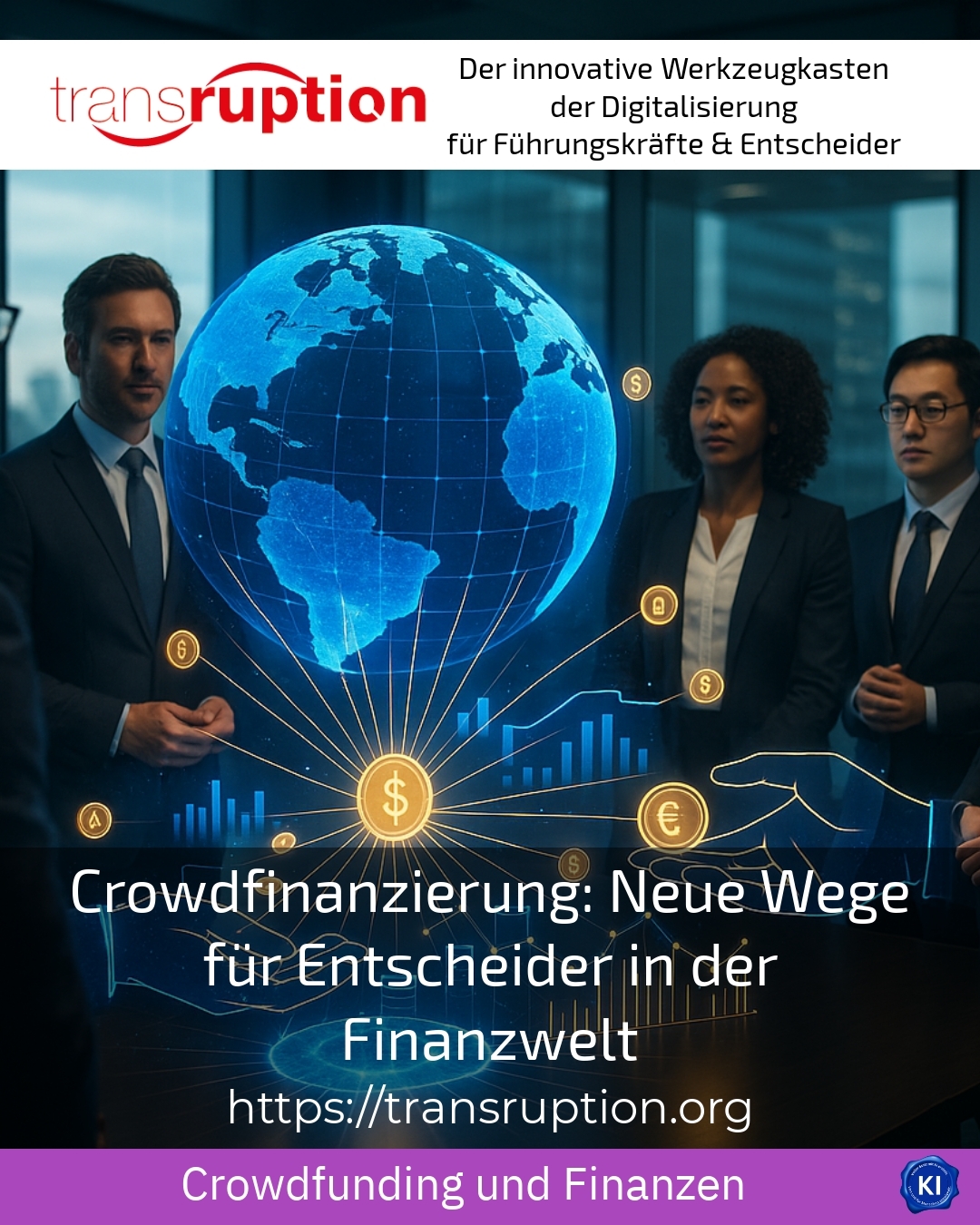Introduction: Crowdfunding as an opportunity for decision-makers in the financial world
Crowdfunding opens up new ways to finance projects and innovations. For decision-makers in the financial world, this is an exciting addition to traditional forms of financing. More and more entrepreneurs, start-ups and creative minds are using crowdfunding as a means of obtaining capital from many small investors to realise their projects. In this blog article, we show how crowdfunding works, what variants there are and how it is used successfully in practice.
Understanding the basics of crowdfunding
Crowdfunding is based on the idea that many people raise a larger sum together with small amounts. Financing usually takes place via specialised online platforms on which project initiators present their idea. Instead of traditional banks acting as intermediaries, backers have a direct link to the project.
Example from the start-up sector: A young technology company presents its prototype on a crowdfunding platform, sets a funding target and raises the necessary capital for production within a few weeks.
Crowdfunding is also popular in the cultural sector. An independent filmmaker uses a platform to collect donations from film fans, who receive exclusive insights into the project in return.
BEST PRACTICE for the customer (name concealed due to NDA agreement): More than 20,000 euros were raised for a creative project via crowdfunding within four weeks, despite the lack of traditional investors. The project was successfully completed and the supporters received individualised thank-you packages.
Different forms of crowdfunding
Not all crowdfunding is the same. Decision-makers should be familiar with the different models in order to choose the right method for their projects. The most important forms are
Reward-based crowdfunding
Supporters invest here without expecting a return. In return, they receive exclusive products, special experiences or personalised thank-you notes.
Example: A design company offers supporters special editions of a new product that are only available via the crowdfunding campaign.
Equity-based crowdfunding (crowdinvesting)
Investors acquire shares and participate in profits or increases in value. This form is particularly popular with young companies and start-ups that require growth capital.
Example: A biotechnology start-up enables investors to invest via a crowdinvesting platform. The investors receive future profit shares.
Lending-based crowdfunding (crowd lending)
The crowd grants loans that are repaid with interest. This variant is an alternative to bank loans.
Example: A small brewery receives a loan from the crowd to expand production and repays the amount with interest within the agreed term.
Practical impulses for successful projects
Good preparation is crucial for the long-term success of crowdfunding. This starts with a clear presentation of the project. Supporters expect transparency and a direct benefit or insight.
Tips for decision-makers in financial projects:
- Set realistic financing targets and define a clear term.
- Make the rewards attractive and exclusive to motivate the crowd.
- Communicate regularly with supporters to build trust and communicate the progress of the project.
BEST PRACTICE at the customer (name hidden due to NDA contract): A provider of sustainable technologies accompanied its crowdfunding campaign with regular updates. This not only kept supporters informed, but also involved them in the development process, which significantly strengthened loyalty.
The financial world itself is also increasingly using crowdfunding to expand the market. For example, innovative lending platforms are offering crowd lending specifically to provide funds for SMEs.
BEST PRACTICE for the customer (name concealed due to NDA agreement): A regional energy transition fund raised capital via crowdfunding to finance several solar projects. The crowd benefited from a sustainable return and the region enjoyed a local benefit.
Transruption coaching as support for crowdfunding
Many initiators face the challenge of launching their crowdfunding project without any experience. Professional coaching can provide valuable impetus here and support the project with specific methods. Transruption coaching is designed to support decision-makers who want to successfully realise projects with crowdfunding.
Organisational planning, communication with the crowd and risk management are supported. In this way, typical stumbling blocks can be avoided and the flow of capital secured.
Example: An innovative social impact incubator opted for coaching to help with the preparation and implementation of its crowdfunding campaign. In the end, the funding target was significantly exceeded.
My analysis
Crowdfunding offers an attractive and flexible alternative for financing a wide range of projects. For decision-makers in the financial world, this opens up new opportunities to promote projects and engage directly with the crowd. The different variants, whether reward-based, equity- or lending-orientated, suit different needs and risk profiles. Successful campaigns rely on transparent communication, attractive rewards and strategic planning - professional coaching can play an important role here. Overall, crowdfunding supports future-oriented developments by combining swarm intelligence and capital.
Further links from the text above:
Crowdfunding definition and explanation - Seobility Wiki
What is crowdfunding? Definition and procedure - Lendahand
Crowdfunding: definition, types and success factors - Companisto
Crowdfunding for start-ups - Anthropia
For more information and if you have any questions, please contact Contact us or read more blog posts on the topic TRANSRUPTION here.
















